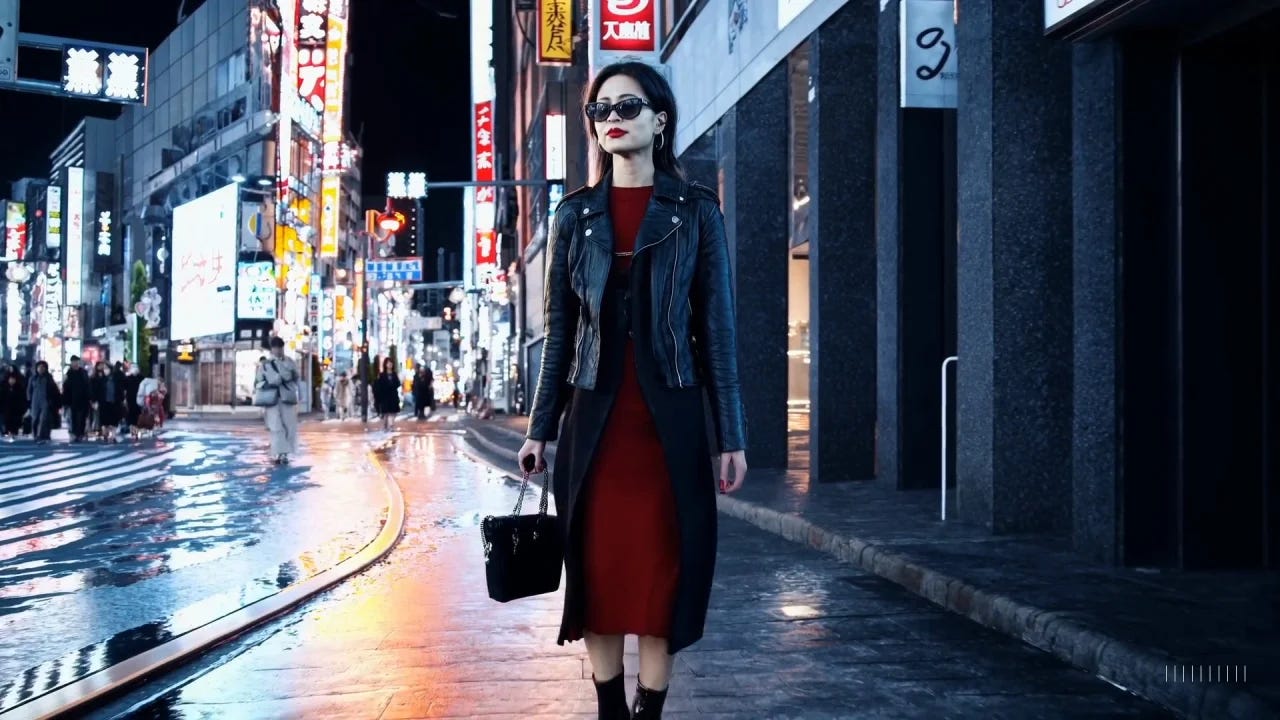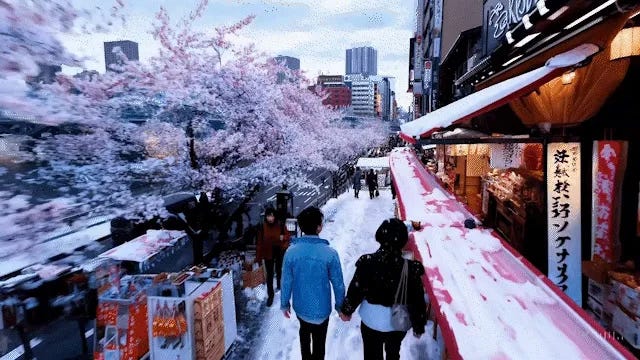OpenAI’s Sora is the Future of Text-to-Video
Sora is a substantial advancement in the AI-driven creative domain.
OpenAI, the company behind ChatGPT (which you probably know well by know since it’s featured on our posts weekly!), has recently introduced a groundbreaking project: Sora. This new text-to-video generation tool signifies a substantial advancement in the AI-driven creative domain, promising to convert simple textual descriptions into vibrant, dynamic, and incredibly realistic video content.
Sora's unveiling stands as a testament to the rapid advancement and potential of AI technologies in enhancing creative expression. As we delve into the capabilities and implications of Sora, it becomes clear that this tool, in many ways, is more advanced than other text-to-vid generators on the market.
We are now in an era where the power of imagination melds seamlessly with the prowess of AI, opening up unprecedented avenues for artists, filmmakers, and content creators worldwide.
But what is Sora? Here’s how OpenAI describes it:
Sora is a diffusion model, which generates a video by starting off with one that looks like static noise and gradually transforms it by removing the noise over many steps. Sora is capable of generating entire videos all at once or extending generated videos to make them longer. By giving the model foresight of many frames at a time, we’ve solved a challenging problem of making sure a subject stays the same even when it goes out of view temporarily. Similar to GPT models, Sora uses a transformer architecture, unlocking superior scaling performance. We represent videos and images as collections of smaller units of data called patches, each of which is akin to a token in GPT. By unifying how we represent data, we can train diffusion transformers on a wider range of visual data than was possible before, spanning different durations, resolutions and aspect ratios.
Sora's Capabilities Set it Apart
What does that imply in practical terms? Simply said, Sora stands out for its ability to produce realistic videos from text prompts, showcasing advanced capabilities that push the boundaries of current technology:
Photorealistic Video Generation: Sora excels in transforming text prompts into high-definition, realistic videos. This capability is pivotal, allowing for the creation of complex scenes with multiple characters and intricately detailed backgrounds, distinguishing Sora in the digital content creation landscape.
Advanced Character and Emotion Rendering: A standout feature of Sora is its ability to generate characters that move naturally and display a range of emotions. This advancement not only adds depth and realism to the content but also opens new avenues for storytelling and digital art, bringing AI-generated characters closer to lifelike representations.
Interactivity with Still Images and Video Enhancement: Sora extends its utility by interacting with still images, enabling the conversion of a single frame into a dynamic video. Additionally, it can enhance existing videos by filling in missing frames or extending clips. This dual capability positions Sora as both a creator and enhancer of visual content, making it a versatile tool in filmmaking and content creation.
Technical Achievements and Limitations
The advent of Sora marks a substantial technical achievement in AI video generation. This evolution from static image generation to dynamic video creation involves not just visual rendering but an intricate understanding of motion and temporal progression. It's a significant step forward in AI's capability to interpret and visualize narratives over time, transforming it from a tool for creating visuals to a storyteller in its own right.
However, as with any pioneering technology, Sora comes with its set of limitations. Despite its advanced capabilities, the model sometimes encounters challenges in accurately simulating the physics of more complex scenes. This can lead to visuals that, while impressive, may occasionally defy the laws of physics or struggle to represent cause-and-effect scenarios consistently.
It has also been reported that one minute of video can take an hour or more to generate. This is a current challenge for anyone looking to use it in their workflows. But relatively speaking, when compared to traditional video creation timelines, budgeting, and typical production requirements, Sora is still providing immense potential opportunities for solo or small video producers.
Competitive Landscape
In the rapidly evolving landscape of AI-driven video generation, Sora positions OpenAI at the forefront of innovation. Yet, it exists in a competitive field populated by tech giants and emerging startups. Companies like Google and Meta have also made significant strides in this domain with their respective tools, Lumiere and Make-A-Video.
Sora distinguishes itself with its focus on high-definition, photorealistic videos generated from text. This feature sets it apart from the competition, offering a different level of sophistication and realism. The tool’s advanced understanding of language, emotion, and physical properties offers a unique edge.
The competitive landscape of AI video generation is not just about technological prowess; it's also about the nuances and specific capabilities of each tool. Sora's entry into this space underscores the diverse approaches taken by different players in solving the complex puzzle of AI-generated content. Each contributes to a broader understanding and development of this technology, pushing the boundaries of what's possible in digital content creation. As the field continues to grow, Sora's role in shaping the future of video generation becomes increasingly significant.
Safety and Accessibility
OpenAI's approach to rolling out Sora has been notably cautious, reflecting a keen awareness of the potential risks associated with such powerful AI tools. The company has initially limited access to Sora to a select group of red teamers and visual artists. This strategy allows for rigorous testing in controlled environments, ensuring that any potential harms or risks associated with its use are identified and mitigated before wider release.
One of the primary concerns with AI-generated content, particularly with a tool as powerful as Sora, revolves around deepfakes and misinformation. The potential for misuse in creating deceptive media or spreading false information is a significant challenge. OpenAI's careful approach to Sora's rollout illustrates a growing consciousness within the AI industry about the need to balance innovation with responsibility. By limiting initial access, OpenAI aims to understand and address these concerns, setting a precedent for responsible deployment in the industry.
Looking Ahead to the Future of AI-Generated Content
Sora is a major advancement in AI video generation, marking a creative revolution in transforming digital content creation. However, the journey of Sora underscores a critical narrative in the broader AI industry – the need to balance groundbreaking innovation with ethical responsibility.
As we embrace these advanced tools, it becomes increasingly important to consider their implications on society, media integrity, and the authenticity of information. The careful rollout of Sora by OpenAI serves as a model for how the industry can approach the introduction of powerful technologies with a sense of responsibility and caution.
Looking ahead, the future of AI-generated content is bright and filled with possibilities. But so is the opportunity to misuse and its adoption by malevolent parties (next-gen deep fakes?)
As such, this future also demands a collective effort in shaping its course responsibly. Policymakers, technologists, and users must work together to establish guidelines and frameworks that ensure these technologies are used to enhance creativity and knowledge, rather than to mislead or harm. The role of such collaborative efforts will be pivotal in navigating the challenges and embracing the opportunities presented by AI-driven innovations like Sora.
As we stand at the cusp of this new era in digital storytelling and content creation, it's clear that tools like Sora are not just shaping the future of video generation; they are redefining the very fabric of how we interact with and understand the digital world.
The impact of text-to-video tools like Sora on jobs is significant. On one hand, they present opportunities for professionals to upskill and engage in more creative and strategic roles, as mundane tasks become automated. On the other hand, there's a need for careful consideration and adaptation in job markets, as some traditional roles may evolve or become less in demand.
The journey ahead with AI-generated content is not just about technological advancement, but about creating a future where innovation and ethical responsibility go hand in hand. This includes fostering an environment where AI serves to enrich our digital experiences and societal well-being, while also ensuring that the workforce is equipped and ready to thrive in this new landscape.
Keep a lookout for the next editions of AI Uncovered, which will explore the topics like Multimodal AI, Apple Vision Pro, and more.
Follow on Twitter, LinkedIn, and Instagram for more AI-related content!






